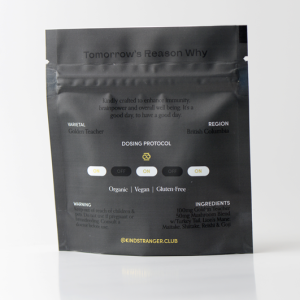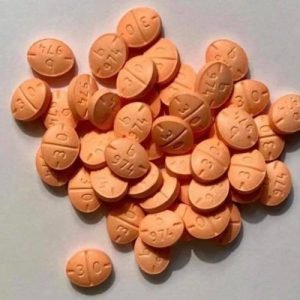Description
Ketamine Near Me
Ketamine was invented to replace PCP as an anesthetic. Today, it’s considered one of the premiere treatments for depression. Here’s how it works.

Ketamine has been around since the 1960s as an anesthetic during surgical procedures.
Over the past several decades, there’s been a growing interest in ketamine as a recreational hallucinogenic and dissociative drug.
Even more recently, ketamine has been shown to offer a unique mechanism for treating depression — unlike anything we’ve ever seen before.
In this article, we’ll cover everything you need to know about ketamine. How it works, what the basic dosages are for each level of effects, and more.

What is Ketamine?
Ketamine is classified as a dissociative hallucinogenic — which distorts the perception of sights and sounds, as well as emotions and personal identification of self.
In medicine, ketamine is used as an analgesic. It doesn’t directly block pain signals like an opiate — instead, dissociative analgesics disconnect the thalamus from the cortex. When this happens, the body still feels pain, but the brain simply “doesn’t care.” We don’t actually feel bothered by the pain.
Experts on the use of ketamine, such as Albert Dahan (professor of anesthesiology at The University of Leiden), suggest ketamine to be “one of the best painkillers ever made.”
Beyond its use as a painkiller, ketamine is used as a recreational drug (illegally). The experience changes according to the dose.
Lower doses feel a lot like being drunk on alcohol.
Higher doses are more similar to psychedelics like DMT or salvia.
A high dose of ketamine can lead to an experience called a “K-hole” — which is an extremely intense dissociative hallucination that can be both beautiful and terrifying all at once.
More recently, research has shown that low doses of ketamine offer powerful antidepressant qualities. It works through entirely different mechanisms than conventional antidepressant medications.
Unlike most drugs, ketamine targets many different receptors at once, making it very difficult to understand exactly what’s going on or how it works.
There’s currently one FDA-approved ketamine spray called Spavato® — which is prescribed for treatment-resistant depression (depression that doesn’t improve with conventional medications).
Ketamine: Specs & Technical Details
| Active Ingredient | (S & R)-2-(2-chlorophenyl)-2-(methylamino) cyclohexanone |
| Level of Risk | Moderate To High |
| Other Names | Special K, Cat Tranquilizer, Vitamin K |
| Most Common Side Effects | Disinhibition, nausea, loss of muscle coordination |
| Duration of Effects | 1 – 3 hours |
| Legality | Available by prescription only |
What Does Ketamine Feel Like?
The effects of ketamine are dependent on the dose you use, your individual body weight and metabolism, how often you use it, what form you’re using (IV, oral, nasal), and whether you’re using ketamine alone or with other substances.
In lower doses, the effects of ketamine resemble alcohol intoxication. It causes feelings of mild euphoria, as well as visual and auditory perceptual changes. It makes users feel as though they’re floating or operating on autopilot. Low doses are mildly stimulating and can make users feel more social or energetic.
Higher doses of ketamine feel very different. They can make you feel withdrawn and introverted. People often report feeling very light and floaty and often experience intense hallucinations, blurred vision, and out-of-body experiences.
In very high doses, people experience what’s commonly referred to as a K-hole — which involves strong out-of-body hallucinations. This is a demonstration of the dissociative aspect of ketamine to its fullest extent. Users feel as though they’re perpetually falling into blackness. It’s as if the fabric of time, as well as one’s sense of self is dissolving.
Some describe the K-hole experience to be like “peering into the keyhole of existence.”
A K-hole can feel both terrifying and exhilarating at the same time. However, most people report the experience to be much more negative than positive.
The effects of ketamine may include:
- Difficulty thinking logically
- Reduced anxiety
- Euphoria
- Déja Vu
- Delusions & ego inflation
- Disinhibition
- Memory loss
- Spatial disorientation
- Altered perception of time & space
- Sedation or fatigue
- Spontaneous bodily sensations (tingling, pulsating)
- A feeling of being light or floating
- Loss of muscle coordination or control
- Reduced sensation of pain
- Increased salivation
- Lowered libido
- Nausea & vomiting
- The feeling of being on “autopilot” or not in control of your body
How Long Do The Effects of Ketamine Last?
Ketamine is not a long-lasting drug. The effects usually take between 30 and 60 minutes to reach their full effect, which lasts about an hour before starting to taper off.
This is part of the reason why some users compulsively use ketamine to continue the trip.
What’s The Dose of Ketamine?
The dose of ketamine can dramatically alter the effects. These doses are for oral tablets. The doses will be different when using ketamine via injection or nasal insufflation.
The lower dose range (20 mg) of ketamine produces milder hallucinations and feels most similar to GHB or alcohol.
High doses start around the 50 mg mark, which produces much more dissociative and introverted effects.
K-hole dosages begin around the 100 mg mark.

Ketamine-Assisted Psychotherapy
The field of psychedelic-assisted psychotherapy (PAP) is growing at an exponential rate.
So far, the only psychedelic that’s been approved for use in therapy is ketamine, but MDMA-assisted therapy is just around the corner.
Over the last 50 years, there’s been over 70 individual phase II clinical trials exploring the benefits of ketamine for conditions such as depression, obsessive-compulsive disorder (OCD), post-traumatic stress disorder (PTSD), drug addiction, and much more.
There are already dozens of ketamine clinics located around the United States, Canada, and some parts of Europe. Most of these clinics focus on the treatment of depression.
There are even virtual ketamine clinics that provide online meetings and send a dose of ketamine for the session in the mail — such as MindBloom.
There are also in-person psychotherapy clinics specializing in ketamine such as Field Trip.

Is Ketamine Legal?
Ketamine is available via prescription only. It’s mainly reserved for emergency medicine and surgery.
Some doctors may prescribe ketamine for the treatment of pain (usually in combination with an opiate), as well as for depression — but only when other treatments have been attempted first.
There are no countries where ketamine is legal for recreational use. This means any ketamine you order online or in-person without a valid prescription is illegal or black market ketamine. Some of this black market ketamine is stolen from veterinarian supplies — some are made in an illicit lab with varying levels of purity.
While we never condone the use of illicit drugs, we’d like to remind you to always test your drugs before you use them should you choose to do so. One of the biggest risks of taking black market ketamine is the adulteration with other dangerous drugs — such as NBOMes or fentanyl.
There are a few prescription ketamine drugs on the market today, including:
- Ketalar® — JHP Pharmaceuticals
- Ketaject® — Phoenix Pharmaceuticals
- Ketaset® — Zoetis
- Spravato® — Johnson & Johnson

Is Ketamine Safe?
Ketamine is used every day by doctors performing surgery or treating people with severe traumatic injuries or burns. It’s also used as a treatment for depression in both injection and nasal spray forms.
Overall, this drug is considered to be relatively safe and is unlikely to lead to overdose.
As an analgesic, it’s one of the safest drugs available and isn’t nearly as likely to lead to respiratory or cardiovascular emergencies compared to other analgesics.
While ketamine is addictive, it has a much lower risk of addiction compared to other prescription medications — especially pain medications or antianxiety medications.
With that said, ketamine does come with inherent risks:
- Ketamine can increase the risk of heart attack or stroke
- Frequent use has been linked with bladder disease
- Blackmarket ketamine may be laced with other, more dangerous drugs
- Ketamine is often used as a date rape drug
- Ketamine can interfere or interact with other medications or alcohol
- Ketamine stops you from feeling pain, increasing your risk of developing serious injuries
- Ketamine can be addictive with more frequent use
- The psychoactive effects of ketamine can be terrifying and may trigger psychosis in susceptible individuals
It’s important to have a trip sitter around and follow the four pillars of safe psychedelic use if you plan on experiencing the deeper levels of ketamine (K-hole).
This experience will cause you to lose control of your body and can be extremely terrifying. So it’s critical that you have someone you trust nearby, and only take the drug in a safe and comfortable environment.
Side Effects of Ketamine
- High blood pressure
- Nausea & vomiting
- Perceptual disturbances
- Loss of coordination
- Slurred speech
- Dissociation (out of body experiences)
Is Ketamine Addictive?
Ketamine is addictive and is often abused.
While it’s still not clear whether ketamine is physically addictive, you can develop tolerance — which means you’ll need to take a higher dose of the drug to get the same experience.
Users become addicted to the dissociative effects of the drug. They compulsively use the substance as a way to find an escape from their reality — which may feel objectively painful or uncomfortable. Addiction is defined as any act of compulsively using a substance (or activity) to find relief, despite clear negative consequences to using the drug.
Most people don’t experience withdrawal symptoms after stopping ketamine. This makes it unlikely that ketamine is physically addictive in the way other addictive drugs like opiates or benzodiazepines are.
How Strong is Ketamine Compared to Other Psychedelics?
Ketamine can be very powerful. While it’s less potent than other psychedelics in terms of the dose, the effects can become much more profound than many other psychedelic substances.
This drug is most comparable in terms of effects to PCP, but less potent and with a much safer profile.
Lower doses of ketamine are similar in their effects to MDMA, MDA, 2C-B, or 2C-E.
DXM, xenon gas, and nitrous oxide both work through similar mechanisms and have a similar dissociative effect.
The full dose of ketamine that leads to a K-hole experience is similar to DMT or salvia but feels subjectively different. A K-hole is usually dark (in more of a “low-light” way than evil or depressing), shadowy, and often involves the feeling of falling or being rapidly teleported to different locations.

How Ketamine Works
Ketamine is considered a “dirty drug”. This doesn’t mean the drug is toxic or poisonous — it refers to the specificity of the drug on its target receptors.
Ideally, a pharmaceutical targets one specific receptor to cause its effect. This makes its effects predictable and easier to study and understand. These drugs are precise and don’t cause any overflow effects on unrelated or irrelevant receptors.
Ketamine, on the other hand, is messy — it activates several different types of receptors, each with a different result. Ketamine stimulates some receptors and inhibits others.
This makes ketamine very difficult to study and understand. It’s also what makes this compound so useful for complex conditions like depression.
Ketamine has been shown to target the following receptors in the brain:
- Opioid receptors
- Blocks NMDA (glutamate) receptors at low doses
- Stimulates NMDA (glutamate) receptors at high doses
- Cholinergic receptors
- Dopamine receptors
- Adrenergic receptors
- Innate repair (HCN1 receptors)
- Sodium channels
1. Ketamine For Anesthesia
Ketamine is primarily used as an anesthetic agent in patients undergoing surgery or following a severely traumatic event. It’s more effective for blocking pain than opiate painkillers, which work by activating the opioid receptors in the spinal cord and brain.
Ketamine works like most other dissociative analgesics — such as PCP, nitrous oxide, and DXM. They work by temporarily blocking the NMDA receptors — thus inhibiting communication between the cortex (the outer portion of the brain where higher thought occurs) from the thalamus. The thalamus is responsible for relaying messages from sensory information like pain, emotion, vision, and taste.
Studies have shown that ketamine owes most of its painkilling effects to its ability to block glutamate receptors (in lower doses) [2]. It also activates the opioid receptors, but to a much lower extent than typical opiate painkillers [3].
Other potential mechanisms for ketamine’s painkilling effects come from its ability to block the muscarinic and nicotinic receptors [4].
A meta-analysis exploring the outcomes of 11 clinical trials using ketamine for pain found it to be extremely effective for managing severe short-term pain but did not offer a good long-term solution for ongoing chronic pain [5].
2. Ketamine For Depression
Newer research (beginning in the early 2000s) shows that ketamine is also a powerful antidepressant. It works through mechanisms not offered by any other antidepressant on the market today. The effects of ketamine are fast-acting, exerting improvements in mood in as little as four hours after administration — even in treatment-resistant forms of depression.
Unfortunately, the effects of ketamine in this regard only last about seven days before another dose is required. It’s considered a third line of treatment for depression. Only when all other antidepressants have failed is ketamine prescribed to manage depression.
Only one ketamine product has been approved for use by the FDA — an isomer called esketamine, sold under the brand name Spravato®. This drug is made by the pharmaceutical company Janssen — a subsidiary of Johnson & Johnson.
How Spravato (and ketamine in general) works for treating depression is still not well understood. But here’s what we know so far:
Ketamine & Synapse Regrowth
Studies have shown that ketamine stimulates the growth of synapses [7]. This is an important finding because no other antidepressant that we know of can do this.
Chronic stress depletes the synapses in certain regions of the brain — especially the medial prefrontal cortex. This region is often implicated in the effects of depression. Researchers in the study gave mice ketamine and observed the formation of tiny spikes on the dendrites of the nerve cells. Spikes that survived for a few days after the treatment eventually formed into new synapses.
This effect is likely what causes the long-term benefits of using ketamine. However, this process takes a few days, so there must be other mechanisms that provide more fast-acting effects on depression.
The mechanism ketamine uses to cause this effect is extremely complicated and involves a cascade of effects [10, 11]. It’s believed ketamine has a greater affinity for glutamate receptors that are located on GABA interneurons, which are inhibitory neurons [12].
Ketamine blocks the effects of these neurons, which cause a downstream increase in glutamate. Excess glutamate activates postsynaptic AMPA receptors, which bolster the effects of BDNF and mTORC1 — which are ultimately responsible for the regrowth of synapses.
Unfortunately, there’s little evidence to suggest that ketamine has a lasting impact on depression. Most studies show that ketamine requires another dose every 2–3 weeks to maintain the antidepressant effects.
Blood Sugar Regulation
Ketamine has been shown to regulate blood sugar levels in regions of the brain associated with depression [6].
It’s not clear whether this has a direct benefit on depressive symptoms or if it’s a byproduct of other improvements in these brain regions.
Circadian Rhythm Regulation
Ketamine has been shown to improve the body’s ability to regulate the circadian rhythm [9]. Researchers are still seeking to understand whether these improvements come as a result of improved mood or if this effect contributes to the greater mood regulation instead.

The History of Ketamine
The primary reason ketamine was developed was to offer a replacement for PCP (phencyclidine) — which was the primary analgesic used for surgery prior to 1970.
Scientists have been searching for an alternative to PCP for a long time. While this drug worked to stop pain and suffering during surgical procedures and after severe traumatic injuries, it often led to long-term side effects like psychosis.
Ketamine was first synthesized by Calvin L. Stevens in 1962. At the time, Stevens was a professor of Chemistry at Wayne State University and worked as a consultant for the Pfizer Pharmaceutical subsidiary, Parke-Davis.
Ketamine (then called CI-581) was first tested on animals and showed very promising results as an analgesic. It was then tested (involuntarily) on prisoners in 1964 [1]. The results of these studies were enough to prove ketamine was just as effective as PCP, only with a much lower risk of side effects. The drug was finally approved in 1970 for use in medicine, and PCP was quickly removed from service.
S-ketamine vs. R-ketamine: What’s The Difference?
Most drugs come in two different enantiomers.
Enantiomers are chemicals that have the exact same chemical structure but are mirror images of each other. Just like your right and left hand. Both hands have the same shape, but in order for them to share the same outline, you have to flip one of them upside down.
There are two enantiomers for ketamine — the “R” and “S” enantiomers.
Ketamine contains both of them at a ratio of around 1:1.
Esketamine (S-ketamine) contains only the “S” ketamine, which is the stronger of the two molecules. S-ketamine is also reported to produce 1.6 times the level of altered body image and hearing, 2.5 times stronger feelings of unreality, and four times the reduction in visual acuity.
What is Kitty Flipping?
Kitty flipping is the practice of mixing ketamine with MDMA. The effects are reported to share a blend of the empathogenic and euphoric effects of MDMA, with the dissociative effects of ketamine. This blend is commonly used at raves or music festivals.
It’s not wise to mix psychedelic drugs, especially synthetic drugs that could contain any number of adulterants already. Always test your substances before you take them, and use a smaller dose should you decide to mix two or more substances together.
What the Future of Ketamine Looks Like
There’s been a growing interest in ketamine surrounding its use as an antidepressant. This is largely due to the fact that this drug works through a mechanism not offered by any of the conventional antidepressant medications.
As more research uncovers how ketamine works, it’s likely we’ll see this drug become more common for people with treatment-resistant depression.
What’s even more likely, is that new (hopefully safer) drugs will be developed that share similar mechanisms of action but that can offer more long-lasting benefits.
The recreational use of ketamine is likely to continue to thrive in the shadows. There have not been any moves to make recreational ketamine use more accessible.































































Reviews
There are no reviews yet.